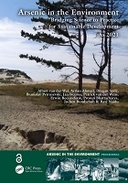Explore

Arsenic in the Environment: Bridging Science to Practice for Sustainable Development As2021
0 Ungluers have
Faved this Work
Login to Fave
The Congress and Exhibition Series ""Arsenic in the Environment"" offers an international, multi- and interdisciplinary discussion platform for research and innovation aimed towards a holistic solution to the challenges posed by the environmental toxin arsenic, with global societal impact. The Congress has focused on cutting edge and breakthrough research in physical, chemical, toxicological, medical, agricultural and other specific issues on arsenic across a broader environmental realm. The Biennial Congress and Exhibition ""Arsenic in the Environment"" was first organized in Mexico City (As2006) followed by As2008 in Valencia (Spain), As2010 in Tainan (Chinese Taiwan), As2012 in Cairns (Australia), As2014 in Buenos Aires (Argentina), As2016 in Stockholm (Sweden) and As2018 in Beijing (P.R. China).
The 8th International Congress As2020 was held June 7-9, 2021 (first time digitally owing to the global COVID-19 pandemic, in Wageningen, The Netherlands) and with a title Arsenic in the Environment - Bridging Science to Practice for Sustainable Development.
The Congress addressed the broader context of arsenic research aligned on the following themes:
Theme 1: Arsenic in Natural Soil and Water Systems
Theme 2: Arsenic in Agriculture and Food Production
Theme 3: Health Impacts of Arsenic
Theme 4: Technologies for Arsenic Removal from Water
Theme 5: Sustainable Mitigation and Management for Sustainable Development
Arsenic in drinking water and food is a major health issue, affecting millions of people in many parts of the world. In recent years serious cases of arsenic exposure through different environmental matrices have been reported from, for example, Argentina, Bangladesh, Chile, China, Taiwan, Turkey, India, Mexico, UK, USA, Pakistan, Vietnam as well as other regions in the world. Arsenic can cause a number of carcinogenic and non-carcinogenic adverse effects on human health and therefore human exposure to arsenic should be avoided. Notably, The Netherlands has been in the forefront of research on arsenic removal technology and developed a cutting edge innovation to remove arsenic to levels below the WHO drinking water guideline to as low as less than 1 μg/L. This has created an enabling environment to discuss on policy issues for defining the new drinking water guideline. The Congress has attracted professionals involved in different segments of interdisciplinary research on arsenic in an open forum, and strengthened relations between academia, research institutions, government and non-governmental agencies, industries, and civil society organizations to share an optimal ambience for exchange of knowledge.
This book is included in DOAB.
Why read this book? Have your say.
You must be logged in to comment.
Rights Information
Are you the author or publisher of this work? If so, you can claim it as yours by registering as an Unglue.it rights holder.Downloads
This work has been downloaded 47 times via unglue.it ebook links.
- 47 - pdf (CC BY-NC) at Unglue.it.
Keywords
- agricultural science
- Agriculture & Farming
- Agriculture & related industries
- arsenic
- arsenic removal
- Biochemistry
- Biology, Life Sciences
- Civil engineering, surveying & building
- Earth sciences
- Economics, finance, business & management
- Energy industries & utilities
- Environmental science, engineering & technology
- Environmental toxicology
- health impact
- Hydrology & the hydrosphere
- Industry & industrial studies
- Mathematics & science
- Primary industries
- Sustainable development
- Technology, engineering, agriculture
- thema EDItEUR::K Economics, Finance, Business and Management::KN Industry and industrial studies::KNB Energy industries and utilities::KNBW Water industries
- thema EDItEUR::P Mathematics and Science::PS Biology, life sciences::PSB Biochemistry
- Toxicology (non-medical)
- Water industries
Editions

